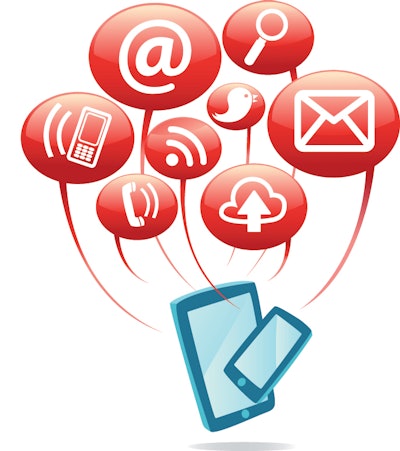
It is important for marketers to understand the many options available within the mobile marketing toolbox. Once marketers have a good understanding of the available tools, the next step is to understand how they intersect with each other and the other media channels. There are new mobile tools, platforms and applications introduced frequently, here are a few important ones to consider:
Mobile video, display or audio ads: Mobile display ads and are an effective way to engage customers and prospects. There are a number of different formats for mobile displays ads. Additionally there are rich media formats, mobile video as well as mobile audio ads, all used to drive engagement and revenue.
Mobile websites: This is a version of your desktop website that has been specifically designed to be compatible with mobile devices. Mobile websites deliver an engaging and streamlined mobile experience that appeals to a mobile visitor who is using their smartphone or tablet to connect with your business.
Mobile apps: Not to be confused with mobile websites, mobile apps are software programs that can be downloaded on a smartphone or tablet. Apps can be used to educate, entertain, engage and/or sell products to users.
Response codes: There are a number of different kinds of response codes, the most common of which are QR codes, Microsoft TAGs, ScanLife, SPARQCodes and others. According to CMBInfo.com, 50% of smartphone users have scanned QR codes and 18% have made a purchase as a result.
Mobile Search Marketing: Mobile Search, like desktop search, is a powerful way to connect consumers with your brand. It is important to note that search behavior and motivations can differ in the mobile environment as well as the fact that search results will appear differently on mobile devices vs. a desktop or laptop. It is also critical to take your customers to mobile optimized pages to deliver a completely enhanced mobile experience. Lastly, consumers can amplify and share your messages more easily on mobile devices, thereby increasing the viral potential of your mobile search marketing.
SMS and MMS: Short Message Service (SMS) and Multimedia Message Service (MMS) are systems that enable brands to send texts or rich media (graphics, video, audio) to customers. (Read 5 Easy Ways to Build a Mobile Marketing Database from Volume 26 of the Dealer Success Guide to learn more about SMS, MMS and building your mobile marketing database.)
Location-Based Marketing (LBM): There are two sub-categories of LBM which include Location-Based Services like foursquare, SCVNGR and WHERE as well as Location-Based Advertising which uses mobile display ads to geo-target prospects within a certain location.
Near Field Communications (NFC): Similar to BlueTooth, NFC uses a small chip embedded in a phone to connect wirelessly to another chip embedded in a kiosk, point-of-purchase poster, debit card terminal or turnstile.
An effective and integrated mobile marketing strategy uses a combination of some or all of these tools to engage with consumers. Marketers should be prepared to meet consumers where they are, study their usage patterns and, ultimately, understand what makes them go from search to purchase.
Read Part 3 of the Become a Mobile Marketing Master series – Taking Full Advantage of Mobile Marketing Opportunities
An excerpt from the Mobile Marketing Association’s Mobile Marketing Roadmap. You can learn more about the Mobile Marketing Association by visiting mmaglobal.com.




















